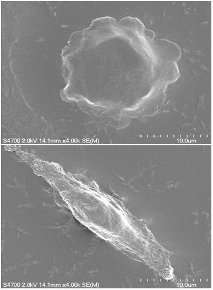On the horizon: Implants with built-in sensors that can shake off infection?

(Phys.org) —Keat Ghee Ong envisions a new generation of implantable biosensors. Not only could they signal if all is well (or not) after surgery, they would do it with no batteries and no computer chips. Plus, they could fight infection.
For his insights, the associate professor of biomedical engineering at Michigan Technological University was one of 24 Outstanding Young Investigators invited to present at the 2013 Frontiers in Bioengineering Workshop. The workshop, held at Georgia Tech Feb. 25-26, brought together leaders in bioengineering to discuss cutting-edge research in the field.
Here's what makes Ong's sensors radically different. Instead of being surgically inserted alongside a device such as an artificial knee, they would be part of the device itself. Ong is developing special coatings for surgical implants, like replacement hips and knees. Those coatings could tell doctors how well a patient is healing.
Made of magnetoelastic materials, the coatings' magnetic properties change under pressure. When scanned from outside the body, they could reveal if the patient's bone is healing properly with an implant—or if it isn't.
A magnetoelastic coating can even help battle infection. "It will vibrate in an AC magnetic field," says Ong. That can knock bacteria loose from the surface, where antibiotics and the body's own immune system can better launch an attack.
This property could also help solve another problem with implants. "If a cell attaches too much, a small vibration on the coating can loosen it and prevent cell growth," Ong says. "The vibration tells the cell, 'Don't stand there, go away,' in the gentlest way possible."
The property could also loosen internal scar tissue, which sometimes sticks to foreign objects in the body, reducing their effectiveness and shortening their lifespan.
Ong and his team have tested their magnetoelastic coatings on cells and mice. It's a fascinating line of inquiry that's beginning to attract attention, says Ong.
"We're looking at something completely different, using physical stimulation to improve the interface of medical implants," he says. "When you do something new, it always takes time to gain credibility, but after a few years, we're making headway."
Ong's recent work, which is partially funded by the National Institutes of Health, is described in two articles: "Remotely Activated, Vibrational Magnetoelastic Array System for Controlling Cell Adhesion," in press in the Journal of Biomedical Science and Engineering and coauthored with Steven Trierweiler, Hallie Holmes, Brandon Pereles and Rupak Rajachar; and "Magnetoelastic Vibrational Biomaterials for Real-Time Monitoring and Modulation of the Host Response" in the Journal of Materials Science: Materials in Medicine, 2013, coauthored with Eli Vlaisavljevich, Hal Holmes, E. L. Tan, Z. Qian, Steve Trierweiler and Rupak Rajachar,
Provided by Michigan Technological University

















